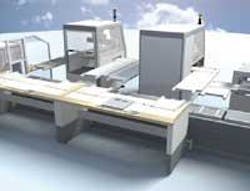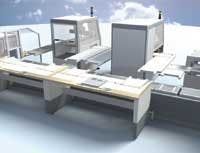Better simulation
I just had to write to you about the ill-informed editorial “The promise of simulation” (Vision System Design, November 2004, p. 56). I have read several of your previous articles in this magazine and, while not always totally agreeing with your sentiments or conclusions, have always felt that you made valid points. So I find it with this piece, but I have not in the past felt it necessary to criticize not only your conclusions but also your use of the available data sources.
My company, AMTRI, is a small, special-purpose and robot-integration company based in the North West of England. We regularly use vision systems and have delivered Halcon-powered vision into aerospace and automotive applications. We also have been simulation users for several years, myself for nearly 20. We are aware of the simulation vendors that you quote, indeed in the past we had three Delmia simulation seats. We have, however, replaced these seats in favor of a relatively new product from Finland called 3DCreate.
The software came out of GM and was only available on Unix workstations for many years. Now Delmia concentrates on aerospace and automotive companies. This is because the V5 series products are now based upon Catia CAD and therefore are out of reach of most companies.
Adept, on the other hand, also developed its software on Unix workstations, simulation never being Adept’s main market focus. Indeed Adept itself came out of Unimation’s West Coast Division, Unimation being the world’s first industrial robot company. (I worked at Unimation (Europe) Ltd. for nine years).
Adept saying that the software was “ahead of its time, and our customers were not ready for it” is a polite way of saying that they failed to sell many seats. This software is now owned by a UK company and, although it is under another name, it is still essentially on the market.
Knowing these facts, last year we at AMTRI evaluated most of the simulation products then available on the market and chose 3DCreate from Visual Components. We are now its UK reseller as we were so delighted with 3DCreate’s price and performance.
The latest release of 3DCreate, out in January 2005, supports a rendering module in which lights can be defined and scenes rendered, facilitating testing of in-line vision and inspection tasks. Indeed, as 3DCreate is fully Windows-based and COM-compliant, a Halcon-based vision program written in a COM language could be incorporated directly into the simulation world.
We discussed just this possibility at the recent Resellers Conference. If there proves to be a market, AMTRI will have a stand-alone product based on this concept before the end of 2005. In the meantime, I have attached an image obtained from the rendering option (see photo).
If your article helps to stimulate the debate, then that will be great; but please give voice to both sides of the argument before publishing in the future.
Bob Lloyd
AMTRI
Macclesfield, UK
www.amtri.co.uk

